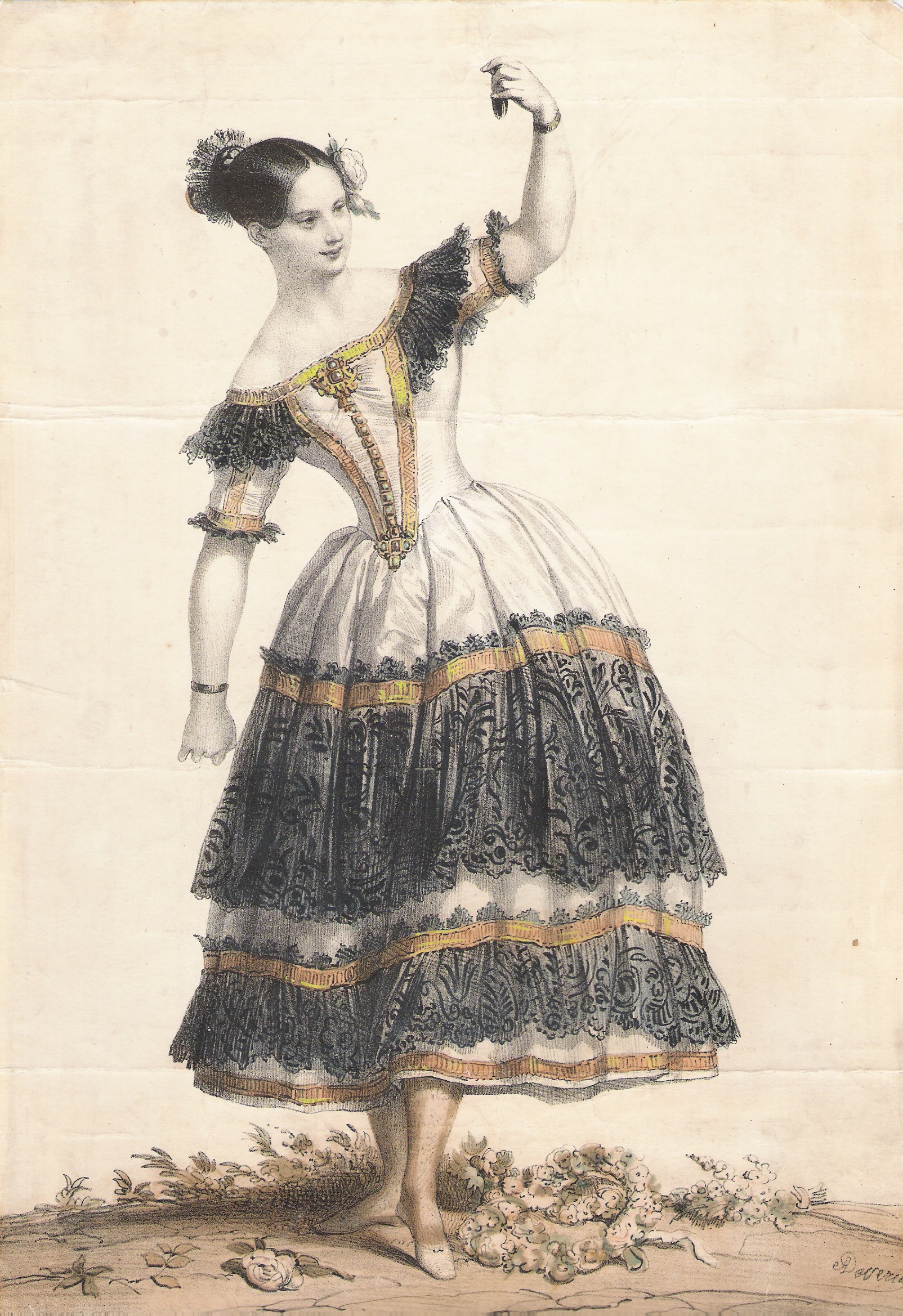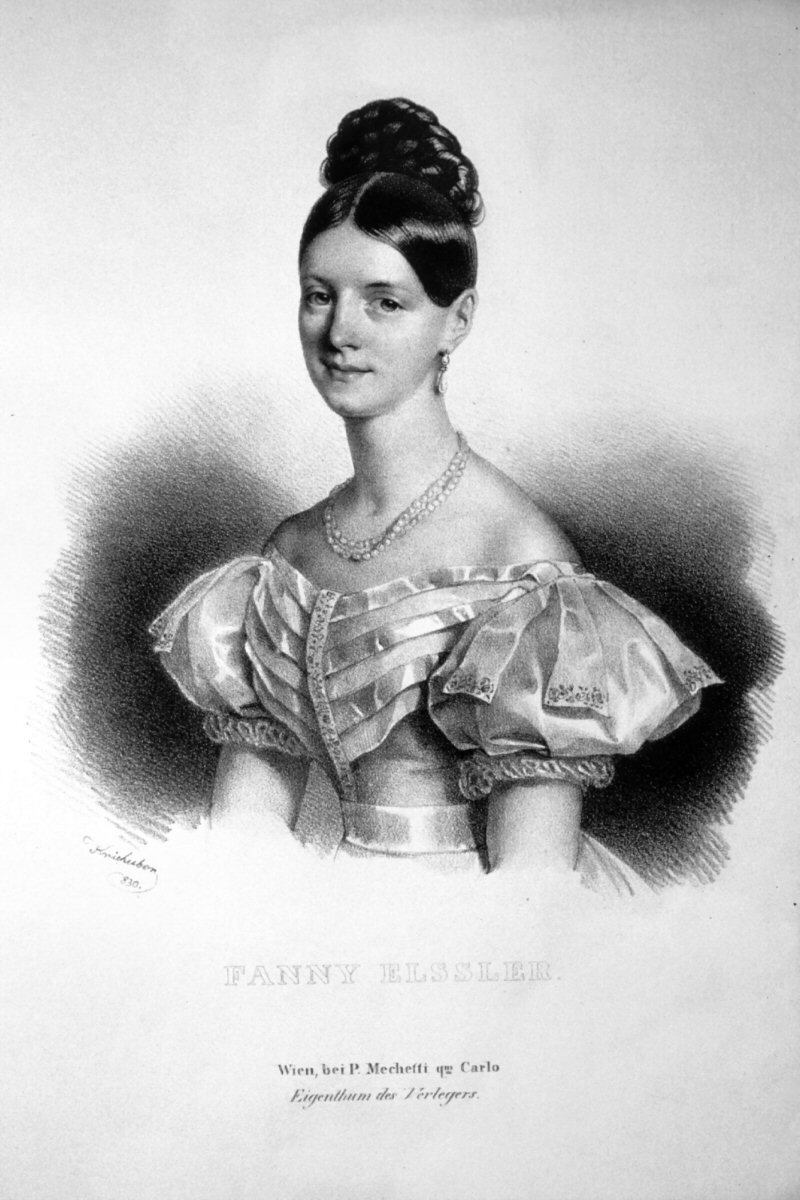|
Le Diable Boiteux (ballet)
''Le Diable boiteux'' is a ballet in three acts by Jean Coralli, with music by Casimir Gide, which premiered on 1 June 1836 at the Paris Opera. The main roles were played by Fanny Elssler, Joseph Mazilier, Amélie Legallois, Pauline Leroux and Jean-Baptiste Barrez. Loosely inspired by the novel of the same name by Lesage, this ballet was the first great success of Coralli who had, until then, mainly re-edited the ballets of other authors. The ''cachucha Cachucha is a Spanish solo dance in or time, similar to the bolero. Cachucha is danced to an Andalusian national song with castanet accompaniment. Etymology From Spanish , small boat. Possibly from diminutive of ', shard, saucepan, probabl ...'' performed by Fanny Elssler was a sensational success. Britannica. Retrieved 24 October 2022.< ... [...More Info...] [...Related Items...] OR: [Wikipedia] [Google] [Baidu] |
Elssler Cachucha
Elssler or Elßler is a surname. Notable people with the surname include: * Fanny Elssler (1810–1884), Austrian ballet dancer, sister of Therese Elssler * Therese Elssler Therese Elssler (german: link=no, Theresia Elßler; 5 April 1808, Vienna - 19 November 1878, Merano) was a dancer. The sisters Therese and Fanny Elssler were both dancers, the former born in 1808, the latter in 1810, both in the Vienna suburb ... (1808–1878), Austrian ballet dancer See also * Ellsler {{surname, Elssler {{Nobold, or Elßler German-language surnames ... [...More Info...] [...Related Items...] OR: [Wikipedia] [Google] [Baidu] |
Jean Coralli
Jean Coralli (15 January 1779 – 1 May 1854) was a French ballet dancer and choreographer, best known for collaborating with Jules Perrot in creating ''Giselle'' (1841), the quintessential Romantic ballet of the nineteenth century. Early life and career Born Giovanni Coralli Peracini, he was a son of a Bolognese family resident in Paris, where his father was a comedian at the Théâtre Italien. As a child he studied at the ballet school of the Paris Opera but chose to go to Vienna to make his debut as a dancer and choreographer. He danced for a short while at the Paris Opera in 1802 and at the King's Theatre in London and then returned to Vienna to assume the position of ballet master at the Hoftheater (Court Theater). During these early years, he and his wife formed the celebrated dancing couple Giovanni and Teresa Coralli and were often pictured in contemporary prints. They danced leading roles in most of the ballets that Coralli created at the Hoftheater, including ''Helena u ... [...More Info...] [...Related Items...] OR: [Wikipedia] [Google] [Baidu] |
Casimir Gide
Casimir Gide (4 July 1804 – 18 February 1868) was a 19th-century French composer, bookseller as well as prints and maps editor. Biography The son of the Parisian bookseller Theophile Etienne Gide (1768–1837), to whom he would succeed, and of a singer in the chapel of the king, he studied harmony and musical composition at the Conservatoire de Paris. On 4 February 1833, he received the bookseller patent from the Maison Gide fils. He was a major printer of lithographs and financed the publication of six volumes, among them nineteen of the ''Voyages pittoresques et romantiques dans l'ancienne France'' by Charles Nodier and Justin Taylor. In 1854, he was one of the first to launch the trend of salon operettas and artistic evenings.Vapereau, ''Dictionnaire universel des contemporains'', p. 744. Works He wrote incidental music, ballets and operas. Shows *1828: ''Les Trois Marie'', vaudeville by Louis Duport, chant and accompagnement *1829: ''La Cachucha'' *1830: ''La Chatte blanche ... [...More Info...] [...Related Items...] OR: [Wikipedia] [Google] [Baidu] |
Paris Opera
The Paris Opera (, ) is the primary opera and ballet company of France. It was founded in 1669 by Louis XIV as the , and shortly thereafter was placed under the leadership of Jean-Baptiste Lully and officially renamed the , but continued to be known more simply as the . Classical ballet as it is known today arose within the Paris Opera as the Paris Opera Ballet and has remained an integral and important part of the company. Currently called the , it mainly produces operas at its modern 2,723-seat theatre Opéra Bastille which opened in 1989, and ballets and some classical operas at the older 1,979-seat Palais Garnier which opened in 1875. Small scale and contemporary works are also staged in the 500-seat Amphitheatre under the Opéra Bastille. The company's annual budget is in the order of 200 million euros, of which €100M come from the French state and €70M from box office receipts. With this money, the company runs the two houses and supports a large permanent staff, ... [...More Info...] [...Related Items...] OR: [Wikipedia] [Google] [Baidu] |
Fanny Elssler
Fanny Elssler (born Franziska Elßler; 23 June 181027 November 1884) was an Austrian ballerina of the Romantic Period. Life and career She was born in Gumpendorf, a neighborhood of Vienna. Her father Johann Florian Elssler was a second generation employee of Nikolaus I, Prince Esterházy. Both Johann and his brother Josef were employed as copyists to the Prince's Kapellmeister, Joseph Haydn. Johann was to eventually become valet to Haydn and attended Haydn up to and was present at Haydn's death. From her earliest years she was trained for the ballet, and made her appearance at the Kärntnertortheater in Vienna before she was 7. She almost invariably danced with her sister Therese, who was two years her senior; the sisters studied dancing with Jean-Pierre Aumer and Friedrich Horschelt beginning when Elssler was 9 years old, also traveling to Naples, Italy, to study with Gaetano Gioja. After some years' experience together in Vienna, the sisters went in 1827 to Naples. Wh ... [...More Info...] [...Related Items...] OR: [Wikipedia] [Google] [Baidu] |
Joseph Mazilier
Joseph Mazilier (1 March 1801 in Marseilles – 19 May 1868 in Paris) was a 19th-century French dancer, balletmaster and choreographer. He was born as ''Giulio Mazarini''. He was most noted for his ballets ''Paquita'' (1844) and '' Le Corsaire'' (1856). He created the role of James in ''La Sylphide'' with Marie Taglioni. Marie Guy-Stéphan debuted in ''Aelia et Mysis'' at the Paris Opéra when she moved in 1853 to Paris. Ballets *'' La Gypsy'' (1839) *''La Vendetta'' (1839) *'' Le Diable Amoureux'' (1840) *''Lady Henrietta, or the Servant of Greenwich'' (''Lady Henriette, ou la Servante de Greenwich'') (1944) *'' Le Diable à Quatre'' (1845) *''Paquita'' (1846) *''Betty'' (1846) *''Griseldis, ou les Cinq sens'' (1848) *''Vert-vert'' (''Green-Green'') (1851) *''Orfa'' (1852) *''Aelia et Mysis, ou l'Atellane'' (1853) *''Jovita, ou les Boucaniers'' (1853) *''La Fonti'' (1855) *'' Le Corsaire'' (1856) *''Les Elfes'' (1856) *'' Marco Spada ou La Fille du Bandit'' (1857) *''Une fête ... [...More Info...] [...Related Items...] OR: [Wikipedia] [Google] [Baidu] |
Amélie Legallois
Amélie Marie Antoinette Legallois (1 July 1801, Paris – 28 February 1870, Paris) was a French dancer. Life Amélie Legallois was born on 1 July 1801 in Paris. She studied at Paris Opera ballet school under Jean-Francois Coulon and debuted at the Paris Opera in 1822. Llegallois usually danced first and second roles. Among her best shows should be mentioned ''Moïse'' (1827), ''Manon Lescaut'' (1830), and ''L'orgie'' (1831). Legallois was also known as a mistress of Marshal of France Jacques Lauriston Jacques Alexandre Bernard Law, marquis de Lauriston (1 February 1768 – 12 June 1828) was a French soldier and diplomat of Scottish descent, and a general officer in the French Army during the Napoleonic Wars. He was born in Pondicherry in Fren ..., who died in her arms in 1828. Legallois retired in 1837. She died on 28 February 1870 in Paris. List of shows * 1827 – ''Moïse'' * 1830 – ''Manon Lescaut'' * 1831 - ''L'orgie'' References 19th-century French ... [...More Info...] [...Related Items...] OR: [Wikipedia] [Google] [Baidu] |
Pauline Leroux
Adèle-Louise-Pauline Leroux (19 August 1809–5 February 1891) was a French dancer and ballerina of the 19th-century Romantic ballet era and a member of the Paris Opera Ballet. Born in Paris, she was the daughter of Louis-Bénigne-Marie Leroux, Commissioner of War, and Marguerite-Suzanne (née Lecocq). Her older sister Antoinette-Désirée Leroux (1807-?) had been a dancer at the Opera from 1821 to 1827, while her sister Aminthe Delisle-Leroux (1815-1878) was an actress. On 12 July 1848 she married the actor Pierre-Chéri Lafont (1797-1873). Leroux was a pupil of Auguste Vestris and Jean-François Coulon and was a member of the Paris Opera Ballet from 1826 to 1837, then from 1840 to 1844 to replace foreign celebrities like Marie Taglioni and Fanny Elssler. She then joined full international tours. Leroux had her first success when she created the role of Marie in ''La tentation'' by Jean Coralli (1832), then in Filippo Taglioni's '' Leda, the Swiss Milkmaid'' (1832) and triump ... [...More Info...] [...Related Items...] OR: [Wikipedia] [Google] [Baidu] |
Jean-Baptiste Barrez
Jean-Baptiste Barrez (28 November 1792 – 27 November 1868) was a French dancer and ballet master. He was the son of surgeon Jean-Baptiste Barrez and Julie Jolivet. Barrez studied under Jean-Francois Coulon and was the principal dancer at the Grand Théâtre de Bordeaux from 1817 to 1821. He married Jeanne-Marie Blache, daughter of choreographer Jean-Baptiste Blache, on 28 July 1819. The young couple had a son, Jean-Baptiste Hippolyte Barrez, (born 22 April 1820) who also become a dancer and dance teacher to Spanish dancer Lola Montez. Jean-Baptiste Barrez began performing at the Paris Opera in 1821 and remained there until 1843. He originated roles in several ballets of Jean Coralli and Joseph Mazilier, including ''Le Diable boiteux'' (1836), ''La Tarentule'' (1839), '' Le Diable amoureux'' (1840) and ''La Péri'' (1843). He began teaching ballet at the opera in 1832; Danish ballerina Lucile Grahn was one of his students. In the spring of 1844, he was called to Madrid, where h ... [...More Info...] [...Related Items...] OR: [Wikipedia] [Google] [Baidu] |
Le Diable Boiteux (novel)
''Le Diable boiteux'' ( English: ''The Devil upon Two Sticks''; ) is a novel by the French writer Alain-René Lesage. It is set in Madrid, and tells the story of demon king Asmodeus, Don Cleophas Leandro Perez Zambullo and his beloved, Donna Thomasa. Textual history The novel was first published in 1707, and republished by the author, with many changes and additions, in 1725. It is sometimes known in English as ''Asmodeus'', and sometimes as ''The Devil on Two Sticks'', under which title the first English translation appeared in 1708, and was dramatised by Henry Fielding in 1768.Keller 1924, p. 57. Source The title and some of the incidents are borrowed from ''El Diablo cojuelo'' (1641) of the Spanish Luiz Veloz de Guevara.France 2005. But after the first few chapters Lesage departs widely from his predecessor. The very plan is abandoned, and the new episodes and characters introduced are entirely original with Lesage. Guevara ends his story with abruptness; while the Fren ... [...More Info...] [...Related Items...] OR: [Wikipedia] [Google] [Baidu] |
Cachucha
Cachucha is a Spanish solo dance in or time, similar to the bolero. Cachucha is danced to an Andalusian national song with castanet accompaniment. Etymology From Spanish , small boat. Possibly from diminutive of ', shard, saucepan, probably from vulgar Latin ', alteration of Latin ', pot, from Greek ', a small container. History The Cachucha was created in Cuba though it is now considered a Spanish dance. Fanny Elssler (1810-1884, Vienna) popularized this dance when she introduced it to the public in the ballet from Rossini's opera ''La donna del lago'' in 1830s London, and cemented its fame in Jean Coralli's ballet '' Le Diable boiteux'' (1836, Vienna). Gilbert and Sullivan sets the dance for the entire company in Act 2 of the Savoy Opera ''The Gondoliers ''The Gondoliers; or, The King of Barataria'' is a Savoy Opera, with music by Arthur Sullivan and libretto by W. S. Gilbert. It premiered at the Savoy Theatre on 7 December 1889 and ran for a very successful 554 ... [...More Info...] [...Related Items...] OR: [Wikipedia] [Google] [Baidu] |





